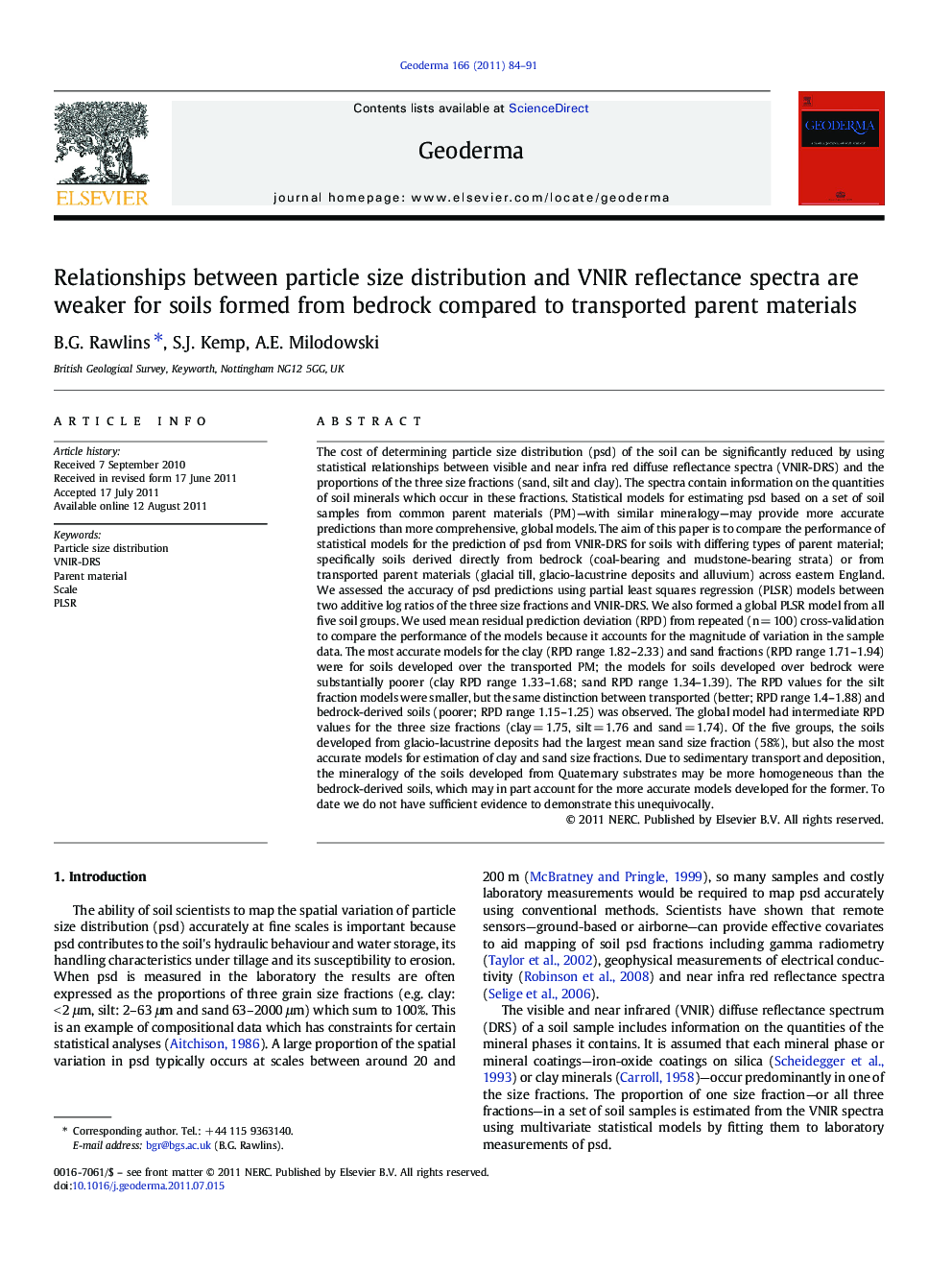| کد مقاله | کد نشریه | سال انتشار | مقاله انگلیسی | نسخه تمام متن |
|---|---|---|---|---|
| 4574058 | 1332472 | 2011 | 8 صفحه PDF | دانلود رایگان |

The cost of determining particle size distribution (psd) of the soil can be significantly reduced by using statistical relationships between visible and near infra red diffuse reflectance spectra (VNIR-DRS) and the proportions of the three size fractions (sand, silt and clay). The spectra contain information on the quantities of soil minerals which occur in these fractions. Statistical models for estimating psd based on a set of soil samples from common parent materials (PM)—with similar mineralogy—may provide more accurate predictions than more comprehensive, global models. The aim of this paper is to compare the performance of statistical models for the prediction of psd from VNIR-DRS for soils with differing types of parent material; specifically soils derived directly from bedrock (coal-bearing and mudstone-bearing strata) or from transported parent materials (glacial till, glacio-lacustrine deposits and alluvium) across eastern England. We assessed the accuracy of psd predictions using partial least squares regression (PLSR) models between two additive log ratios of the three size fractions and VNIR-DRS. We also formed a global PLSR model from all five soil groups. We used mean residual prediction deviation (RPD) from repeated (n = 100) cross-validation to compare the performance of the models because it accounts for the magnitude of variation in the sample data. The most accurate models for the clay (RPD range 1.82–2.33) and sand fractions (RPD range 1.71–1.94) were for soils developed over the transported PM; the models for soils developed over bedrock were substantially poorer (clay RPD range 1.33–1.68; sand RPD range 1.34–1.39). The RPD values for the silt fraction models were smaller, but the same distinction between transported (better; RPD range 1.4–1.88) and bedrock-derived soils (poorer; RPD range 1.15–1.25) was observed. The global model had intermediate RPD values for the three size fractions (clay = 1.75, silt = 1.76 and sand = 1.74). Of the five groups, the soils developed from glacio-lacustrine deposits had the largest mean sand size fraction (58%), but also the most accurate models for estimation of clay and sand size fractions. Due to sedimentary transport and deposition, the mineralogy of the soils developed from Quaternary substrates may be more homogeneous than the bedrock-derived soils, which may in part account for the more accurate models developed for the former. To date we do not have sufficient evidence to demonstrate this unequivocally.
► Stronger relationships between psd and NIR spectra for soil over transported material.
► Local models give more accurate predictions than global statistical models.
Journal: Geoderma - Volume 166, Issue 1, 30 October 2011, Pages 84–91